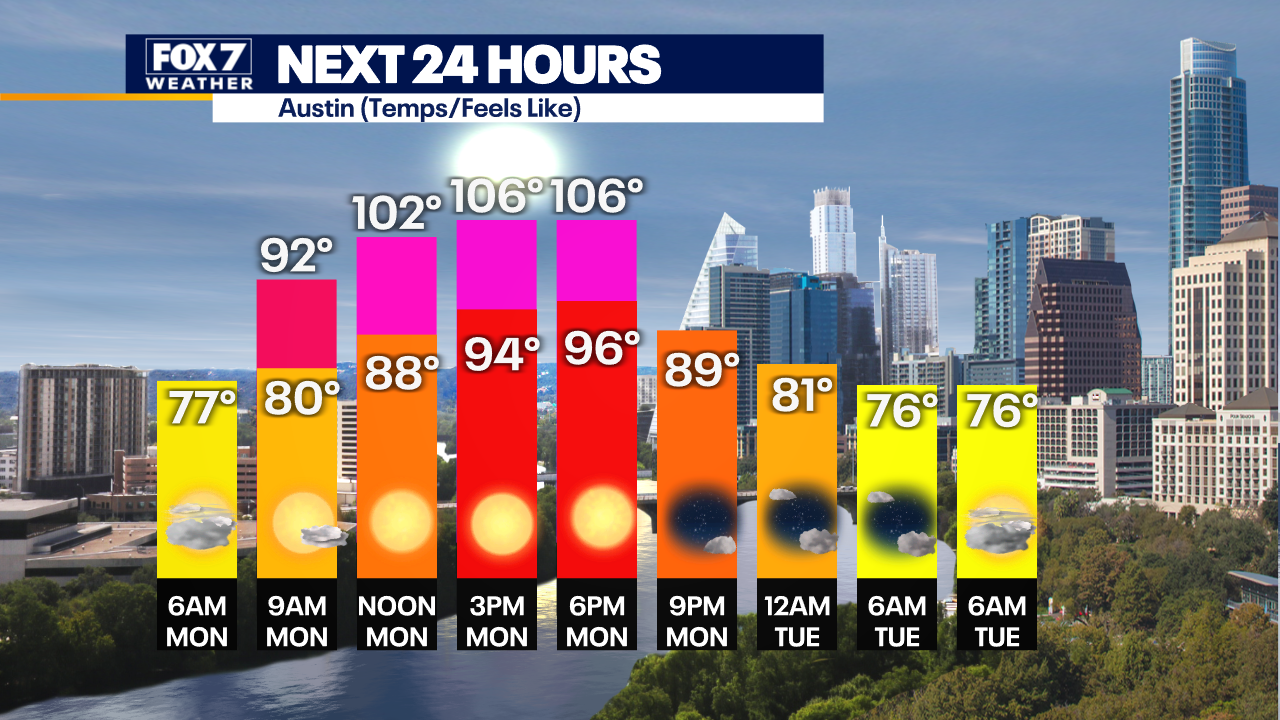The Blistering Truth About Austin Weather: Is it Really THAT Hot?
Austin, Texas, is a city known for its vibrant music scene, outdoor recreation opportunities, and a thriving cultural atmosphere. However, one aspect of Austin that often surprises visitors and locals alike is its extreme heat. With temperatures often soaring above 100°F (38°C) during the summer months, it's no wonder that many people wonder if Austin's weather is really that hot. In this article, we'll delve into the facts and figures surrounding Austin's climate, exploring the reasons behind its scorching summers and debunking common myths about the city's weather.
Understanding Austin's Climate
Austin is located in the southern Great Plains, an area known for its continental climate. This type of climate is characterized by hot summers and mild winters, with little precipitation throughout the year. Austin's average temperature ranges from 45°F (7°C) in January, the coldest month, to 96°F (36°C) in July, the hottest month. While it's true that Texas is known for its hot summers, Austin's climate is unique in that it experiences a relatively short summer season, with the hottest months typically occurring in June and July.
Temperature Records
According to data from the National Centers for Environmental Information (NCEI), Austin has recorded temperatures above 100°F (38°C) on numerous occasions. In fact, the city has experienced an average of 16 days per year with temperatures above 100°F (38°C) since 1991. While these temperatures may seem extreme, it's worth noting that they are not uncommon for cities located in the southern United States.
Summer Heat Waves
One of the most notable features of Austin's climate is its summer heat waves. These heat waves, which can last for several days or even weeks, are a result of high-pressure systems that dominate the region during the summer months. During these heat waves, temperatures can soar above 105°F (40°C), leading to increased heat-related illnesses and mortality.
• The heat index, which takes into account both temperature and humidity, can make the air feel even hotter than the actual temperature.
• Heat waves are more common during the summer months, but they can occur at any time of the year.
• Climate change is contributing to an increase in heat waves, as warmer ocean waters and increased atmospheric moisture lead to more extreme weather events.
Debunking Common Myths About Austin's Weather
Despite the heat, many people believe that Austin's weather is mild and pleasant. However, this couldn't be further from the truth. Here are some common myths about Austin's weather that are busted:
Myth #1: Austin's Weather is Mild
While it's true that Austin's winters are mild, the city's summers are anything but mild. Temperatures often reach the triple digits, and the heat index can make the air feel even hotter.
The Reality
• Winters in Austin are characterized by mild temperatures, but they can be cool, especially in the mornings and evenings.
• The average temperature in January, the coldest month, is 45°F (7°C).
• Summer temperatures, on the other hand, can reach as high as 105°F (40°C) during heat waves.
Myth #2: Austin's Weather is Unpredictable
Many people believe that Austin's weather is unpredictable, with temperatures fluctuating wildly from day to day. However, this couldn't be further from the truth.
The Reality
• Austin's climate is characterized by a relatively stable temperature range during the summer months.
• While temperatures can fluctuate, the city typically experiences a consistent temperature range, with temperatures rarely dropping below 50°F (10°C) or rising above 110°F (43°C).
• Weather patterns are influenced by high-pressure systems, which can bring heat waves and dry air.
Conclusion
In conclusion, Austin's weather is indeed hot, especially during the summer months. However, the city's climate is unique in that it experiences a relatively short summer season, with the hottest months typically occurring in June and July. By understanding the facts and figures surrounding Austin's climate, we can better appreciate the city's extreme heat and take steps to stay safe and healthy during the summer months.
Tips for Staying Safe in the Heat
• Stay hydrated by drinking plenty of water throughout the day.
• Avoid strenuous activity during the hottest part of the day, typically between 11am and 3pm.
• Take regular breaks in cool, shaded areas to avoid heat exhaustion.
• Check on vulnerable neighbors, such as the elderly and young children, who may be more susceptible to heat-related illnesses.
By being aware of the facts and taking steps to stay safe, we can enjoy all that Austin has to offer, even in the heat of the summer.
Kaitlyn Krems Fans
Sabrina Carpenter Height Ft
Did Karla Homolka Parents Forgive Her
Article Recommendations
- Cinemas
- Jackoherty
- Charlotte Parkes
- Beyonc
- Hisashi Ouchi Pictures
- 2 Actorsied Yesterday
- Taylor Mcgregor Age
- Sophie Raind
- Diddy Party Pos
- Mmashare



